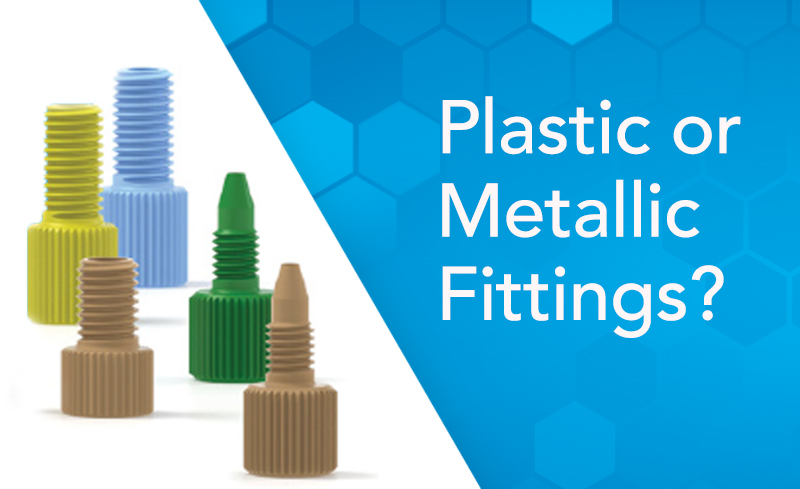

Plastic or Metallic: Which One Do I Choose For A Fitting?

Which to Choose – a poem
Steel on plastic Way too drastic!
Plastic on steel
What a deal!
One of the most common dilemmas a fittings user faces is deciding between plastic and metallic fittings.
You can nearly always use a plastic fitting on any type of tubing — polymer or metallic. As long as the fitting will hold more than the pressure you expect with your application and as long as your tubing is suited for the style of connection you are trying to make (e.g., external compression, internal expansion, etc.), then you should not have any problems with the connection.
On the other hand, it can be dangerous — or even impossible — to use a metallic fitting on plastic tubing. When a metallic fitting crimps down on plastic tubing, because the metal is so much stronger than the tubing material, it very firmly squeezes the tubing wall. In fact, it might squeeze the tubing wall so hard that it damages the tubing or collapses the inner diameter, thus rendering your tubing unusable in your application.
To help determine the possible fitting options that can be used — assuming the flow path tubing you are using is fairly rigid — you can reference the following table as guidelines:
Fitting Applications: Plastic vs. Metallic
| Fitting | Tubing | Port | Recommended? |
| Plastic | Plastic | Plastic | Yes |
| Plastic | Steel | Plastic | Yes |
| Plastic | Steel | Steel | Yes |
| Plastic | Plastic | Steel | Yes |
| Steel | Steel | Steel | Yes |
| Steel | Plastic | Steel | No |
| Steel | Plastic | Plastic | No |
| Steel | Steel | Plastic | No |
Summing It Up
Overall, plastic fittings can serve as the connection of choice for a vast majority of tubing connections. The following reasons show why:
- A wide variety of polymer fittings are available
- Polymer fittings frequently offer superior chemical compatibility
- Polymer fittings can hold to most required pressures
- Nearly universal functionality is possible with polymer fittings
- Polymer fittings are reusable over and over again
VIEW OUR FITTINGS 101 GUIDE TO GET MORE TIPS AND INSIGHTS ON FITTINGS
